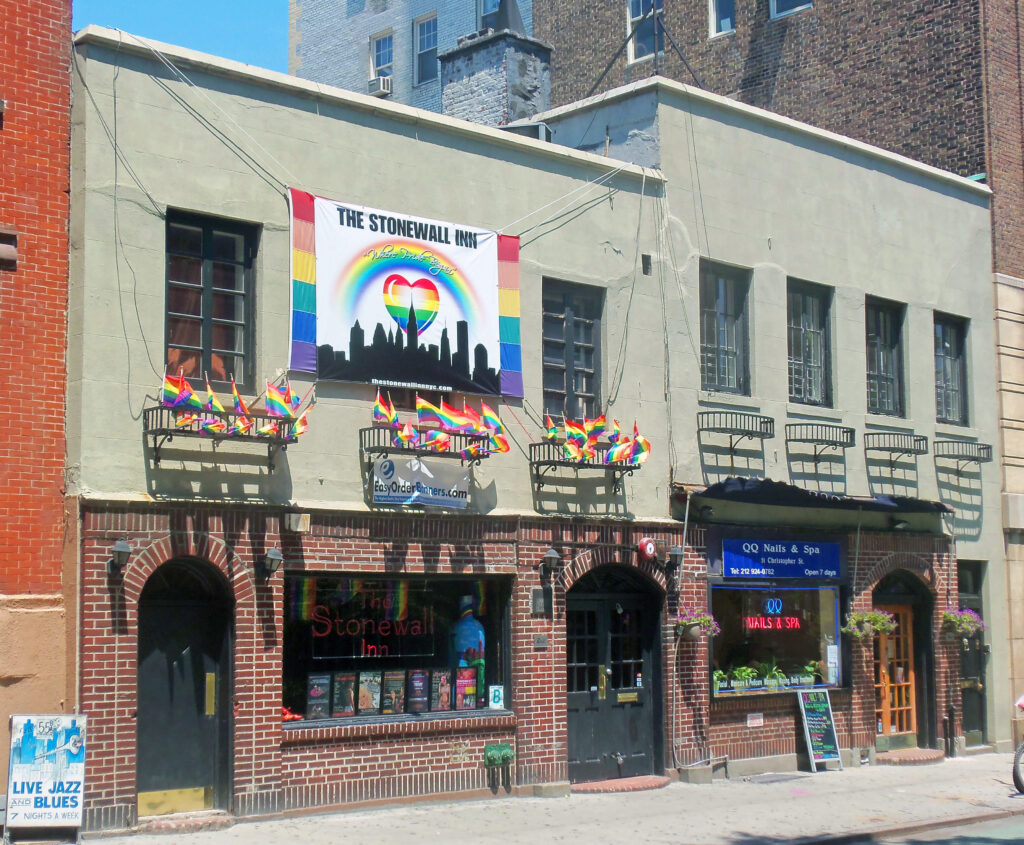

Every year during the month of June, across streets and screens around the country and the world, rainbow flags are widely displayed in celebration of Pride Month. America250 is proud to support the LGBTQ+ community and share its history, starting with these facts you may not have known.
The Pride flag was inspired by America’s bicentennial
Artist, Vietnam War veteran and drag performer, Gilbert Baker, designed the rainbow flag. He was put to the task by the openly gay politician, Harvey Milk. Baker was inspired by the many American flags of the 1976 bicentennial celebrations, which helped him recognize the gay community’s need for a similar unifying symbol. Using his clothing design skills and with the help of volunteers, Baker produced the first version of the iconic rainbow flag. It was first displayed on June 25, 1978 in San Francisco during the Gay Freedom Day Parade.
Women got ‘married’ in the late 1800s and early 1900s
Boston Marriages, the union between two financially independent women who lived with each other, became very common in New England towards the end of the 19th century. This resembled any other marriage except that they were not legally binding. Public life and careers were considered a man’s responsibility at the time, whereas women were encouraged to remain in a gentle environment spending time with other women. As a result, it was normal for women to publicly display affection for one another. Some women not only kissed, held hands and linked arms but also chose to “marry” one another. Though it is unclear if all these women actually identified as gay, it is believed that Boston Marriages were used as a method for lesbians to be together. These marriages were no longer deemed socially acceptable once lesbianism became more well known. The term “Boston Marriage” most likely originated from the 1885 novel by Henry James, The Bostonians, which features two women who develop a relationship.

New York City gay bars were run by the Mafia in the 1960s
In the 1960s, the interests of the mafia and the gay community overlapped. At the time, bar raids and general disapproval from society left the gay community wanting a place where they could openly be themselves. New York City’s Italian Mafia, interested in money and running most of the city’s nightlife at the time, recognized the opportunity. In 1966, the Stonewall Inn was bought and turned into a gay bar by “Fat Tony” Genovese, a member of one of the prominent Italian-American mafia families. The Stonewall Inn later became the site of one of the most pivotal moments in the gay rights movement, the 1969 Stonewall Riots.
Interested to learn more about LGBTQ+ history?
Read about African American activist, attorney, priest, poet and human rights champion, Pauli Murray.
Sources
Compiled from History.com: “How did the Rainbow Flag Become an LGBT Symbol,” “Women Got ‘Married’ Long Before Gay Marriage,” “7 Facts about the Stonewall Riots and the Fight for LGBTQ Rights”